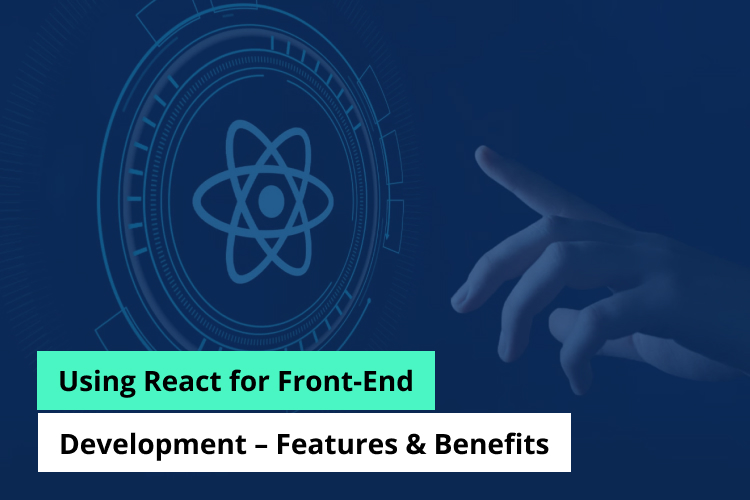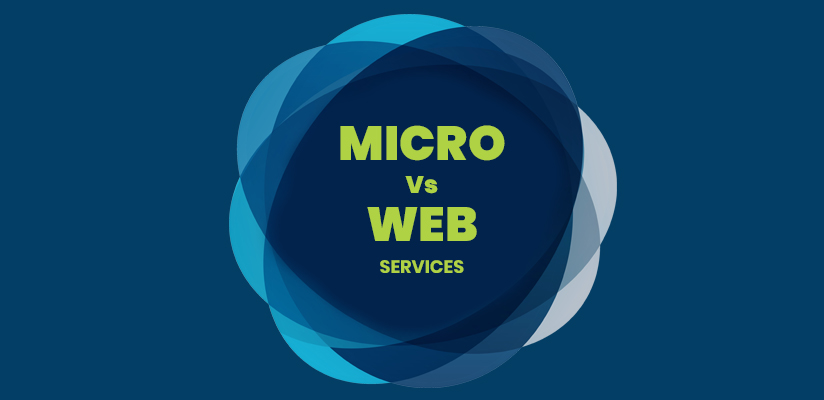Using React for Front-End Development – Features & Benefits

In today’s fast-paced world, where technology is constantly evolving, companies need to stay up-to-date with the latest trends and tools. You don’t want to be that company using a fax machine in 2023, do you? That’s just embarrassing.
When it comes to front-end development, React is the cool kid on the block. It’s the leather jacket-wearing, motorcycle-riding rebel that all the other tools wish they could be. Not only is it powerful and efficient, but it’s also easy to use, making you feel like you’re cruising down the highway with the wind in your hair.
We’ll analyze React’s numerous capabilities and advantages in this blog. We’ll discuss how React’s modular structure can help you develop faster, its virtual DOM can help you perform better, and its cross-platform compatibility can help you conquer the world (or at least the digital world). So grab your leather jacket, hop on your virtual motorcycle, and let’s take a ride through the world of React.
React Overview:

React is not just a JavaScript library, it’s a game-changer. It’s like the superhero of front-end development, swooping in to save the day with its incredible powers. React was created by Facebook in 2011, but it didn’t become widely popular until a few years later when it was released as an open-source library.
Now, you might be wondering, what’s so special about React? Well, it’s like having a magic wand that can turn complex UI components into simple building blocks. With React, you can create powerful, dynamic, and interactive user interfaces that are easy to maintain and update.
The history of React is like a rollercoaster ride. At first, it was met with skepticism, but then it quickly gained popularity as developers realized its potential. It’s like the underdog who rises to fame and becomes a superstar.
Today, React is used by millions of developers worldwide, and it’s become the go-to tool for building modern web applications. It’s always one step ahead of the game and setting the standard for the industry. So if you’re looking for a tool that can help you build powerful, efficient, and scalable user interfaces, look no further than React. It’s the superhero your front-end development needs.
How Does React work? 
React is like a master chef in a fancy restaurant. It takes a bunch of individual ingredients, combines them in just the right way, and creates a beautifully crafted dish that leaves you feeling satisfied and impressed. In the same way, React takes individual UI components, combines them, and creates a dynamic and interactive user interface.
How does React accomplish this?
By using a virtual representation of your user interface called the virtual DOM. This virtual DOM allows React to update only the components that need to be changed, rather than updating the entire page. Think of it as a chef only changing the seasoning on one part of the dish, rather than cooking the whole thing all over again.
React also uses a component-based architecture, which is like having a pantry full of pre-made ingredients that you can use in multiple dishes. These components can be easily reused, saving time and effort in the development process.
In addition, React’s declarative programming style is like having a recipe that tells you exactly what to do, rather than trying to figure it out on your own. This makes your code easier to read and maintain.
Benefits of Using React for Front-End Development:
React is a powerful JavaScript library for building user interfaces. It offers a range of features and benefits that make it a popular choice for front-end development.
Virtual DOM:
The Virtual DOM is a key feature of React that provides several benefits in front-end development. Here are some of the benefits of using the Virtual DOM in React:
- Improved performance: The Virtual DOM allows React to make changes to the user interface more efficiently by reducing the number of actual DOM manipulations required. This approach can improve performance by reducing the amount of work required by the browser.
- Faster updates: React’s Virtual DOM approach can make updates to the user interface faster by only updating the parts of the UI that have changed. This can reduce the time required to update the UI and improve the user experience.
- Cross-browser compatibility: The Virtual DOM approach can improve cross-browser compatibility by providing a consistent interface to the browser, regardless of the underlying browser engine.
- Code simplicity: Using the Virtual DOM can simplify the code by separating the UI representation from the application logic. This approach can make the code easier to understand, test, and maintain.
- Improved debugging: The Virtual DOM can help to improve debugging by providing a clear separation between the application logic and the UI representation. This can make it easier to identify and fix issues in the code.
Component-Based Architecture:
Component-based architecture is a fundamental concept in React front-end development, where an application is built as a series of independent, reusable components. Here are some benefits of using a component-based architecture in React:
- Reusability: React’s component-based architecture allows developers to build reusable components that can be used in different parts of the application or even in different applications. This approach can save development time and improve code maintainability.
- Separation of concerns: Each component in React is responsible for its behavior and presentation. This separation of concerns can help to make the code easier to understand, test, and modify.
- Scalability: Component-based architecture can improve the scalability of an application. New components can be added as the application grows, without the need to modify the existing components. This approach makes it easier to manage the complexity of large applications.
- Code maintainability: React’s component-based architecture makes it easier to maintain the codebase. Developers can make changes to a single component without affecting other parts of the application.
- Collaboration: React’s component-based architecture can help to improve collaboration between developers. Different teams or developers can work on different components simultaneously, without interfering with each other’s work.
Declarative Programming Style:
Declarative programming is a programming paradigm that focuses on describing what needs to be done, rather than how to do it. In declarative programming, the programmer specifies the desired outcome, and the programming language or framework takes care of the implementation details.
Declarative programming is in contrast to imperative programming, where the programmer specifies each step of the algorithm and how it should be executed. With declarative programming, the code is often more concise and easier to understand, as it focuses on the problem domain rather than the implementation details.
For example, in React, developers can use declarative programming to create UI components by describing the desired state of the component using JavaScript and JSX syntax. The React library takes care of updating the component’s DOM when the state changes.
One-Way Data Binding:
One-way data binding is a technique used in front-end development where data flows in a single direction, from the parent component to the child components. In React, one-way data binding is achieved by passing down props from parent components to child components.
Here are some benefits of one-way data binding in React front-end development:
- Predictability: One-way data binding ensures that data flows predictably. Since data can only flow from parent components to child components, it is easier to debug and maintain the code.
- Simplified state management: By using one-way data binding, you can simplify state management in your application. Since data flows in a single direction, you don’t have to worry about managing the state of child components. Instead, you can manage the state in the parent component and pass down the relevant data as props to the child components.
- Improved performance: One-way data binding can improve the performance of your application. Since data flows in a single direction, React can optimize the rendering process and only update the components that have changed, resulting in faster updates and better performance.
- Reduced complexity: One-way data binding reduces the complexity of your code. By keeping the data flow in a single direction, you can avoid complex data dependencies and make your code more readable and easier to maintain.
- Easier debugging: Since data flows in a single direction, it is easier to debug your code. You can easily trace the flow of data and identify where errors are occurring.
Overall, one-way data binding is a powerful technique in React front-end development that can simplify state management, improve performance, reduce complexity, and make debugging easier.
Cross-Platform Compatibility:
Cross-platform compatibility is the ability of a software application to run on different operating systems or platforms without requiring significant modifications. In React front-end development, cross-platform compatibility refers to the ability to build applications that can be deployed on multiple platforms, such as the web, iOS, Android, and desktop.
Here are some benefits of cross-platform compatibility in React front-end development:
- Reduced development time and costs: By building cross-platform applications with React, you can save a significant amount of development time and costs. Instead of building separate applications for each platform, you can build a single application that can run on multiple platforms, which can be a more efficient use of resources.
- Increased reach: Building cross-platform applications can help you reach a wider audience. By making your application available on multiple platforms, you can reach users who prefer different devices or operating systems.
- Consistency: Building cross-platform applications with React can help you maintain consistency across different platforms. By using the same codebase for all platforms, you can ensure that the user experience is consistent across devices.
- Improved user experience: Cross-platform applications can provide a better user experience by leveraging the unique features of each platform. For example, you can use platform-specific UI components and features to create a more native experience for users.
- Easier maintenance: By using a single codebase for multiple platforms, you can simplify maintenance and updates. Instead of updating multiple applications, you can make changes to the single codebase, which can be more efficient and less error-prone.
In a nutshell, cross-platform compatibility in React front-end development can provide significant benefits, including reduced development time and costs, increased reach, consistency, improved user experience, and easier maintenance.
Large Community and Ecosystem:
React has a large community and ecosystem of developers, libraries, and resources, which provides several benefits for front-end development. Here are some of the benefits of the large community and ecosystem in React front-end development:
- Knowledge sharing: The large community of React developers provides an environment for knowledge sharing, collaboration, and support. Developers can share their experiences, knowledge, and best practices, which can help to improve the quality of code and development practices.
- An abundance of resources: The large ecosystem of React provides access to a wide range of resources, such as tutorials, documentation, open-source projects, and forums. These resources can help developers to learn new skills, solve problems, and build better applications.
- Rapid development: The large ecosystem of React provides access to a wide range of pre-built components, libraries, and tools. These resources can help developers to build applications faster, as they can leverage existing solutions instead of building everything from scratch.
- Better quality: The large ecosystem of React provides access to a wide range of libraries and tools that can help developers to improve the quality of their code. For example, tools such as ESLint can help to enforce code quality standards, while libraries such as Redux can help to manage application states more efficiently.
- Future-proofing: The large community and ecosystem of React ensure that the framework will continue to evolve and remain relevant in the future. The community can drive innovation and development, ensuring that React stays up-to-date with the latest web technologies and trends.
Wrapping it Up:
In conclusion, React is like the superhero of front-end development. It swoops in to save the day with its powerful virtual DOM, one-way data binding, and lightning-fast performance. Its component-based architecture is like a team of superheroes working together to build scalable, maintainable applications. And with a large community of developers, React is like the Avengers assembling to take on any challenge. So, if you have a project in mind, React is the superhero you need in your toolkit. Make sure to contact the expert team at Imenso Software who know how to fully utilize this superpower!
Similar Posts

Micro Services Vs Web Services
There are two different architectures for app development, respectively as Micro Services and Web Services. While both of them have some distinct advantages, it is important to know their differences in detail. Let us define, provide details and explain the pros and cons of both of these app development architectures....

Biggest Offshore Development Problems (And How to Solve Them)
For many companies, offshore software is an attractive choice but comes with a unique set of challenges. This is why many professionals advise against software development agencies despite the enticing cost-saving options and faster results. ...

NFT Game Development Guide: All You Need to Know
The history of online games goes back to the first computer game, NIMROD, to multiplayer role-playing games like Dungeons and Dragons. The madness for video games hasn’t ever faded; instead, it keeps expanding....










